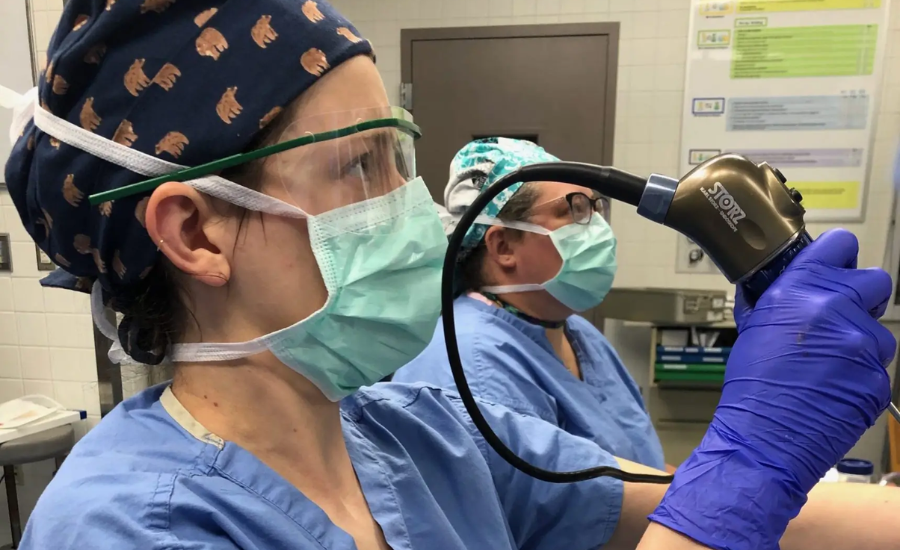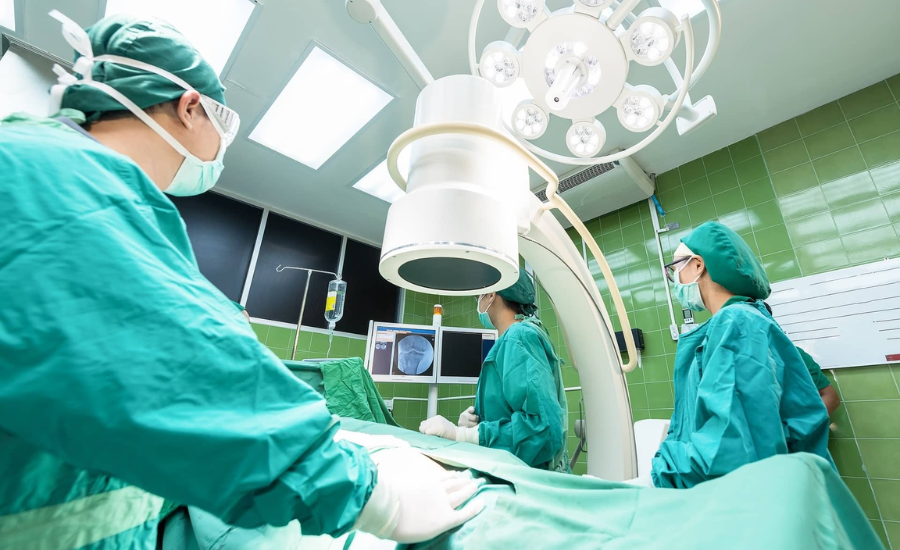In the rapidly advancing field of medical procedures, innovation often defines the future of healthcare. Among the most transformative developments in recent years is Emervuy surgery—a groundbreaking technique that is redefining traditional surgical approaches. With a foundation deeply rooted in established practices, Emervuy surgery has evolved into a procedure that combines state-of-the-art technology with patient-centered care. Its rapid rise in popularity is owed to its promise of delivering improved outcomes, faster recovery times, and a more comfortable experience for patients.
Emervuy surgery is becoming the preferred option for many individuals seeking effective, less invasive solutions to their health concerns. As we journey through the origins, advancements, and current applications of this procedure, it becomes evident that Emervuy surgery represents the future of surgical care. This article will dive deep into the history, innovations, and unique aspects of Emervuy surgery that set it apart from other methods, and why it is poised to become a dominant force in modern medicine.
The Origins Of Emervuy Surgery: A Blend of Tradition & Innovation

Like many modern medical breakthroughs, Emervuy surgery finds its roots in the rich history of traditional practices. Although the procedure has been extensively modernized, its foundation lies in ancient techniques that have evolved over centuries. Understanding this history is key to appreciating the sophistication of Emervuy surgery in its current form.
Traditional Surgical Foundations
Surgery as a medical practice dates back thousands of years, with early forms of surgery being rudimentary and often performed under unsanitary conditions. Techniques in ancient civilizations, such as trepanation (the drilling of holes in the skull) in early Mesopotamian cultures, and more complex procedures documented in ancient Egypt, served as precursors to modern surgical innovations.
Over time, as medical knowledge and technology advanced, so did surgical procedures. The Renaissance brought about a renewed focus on anatomy and surgical precision, further refining techniques. However, it was not until the 19th and 20th centuries that surgery truly began to transform with the advent of anesthesia, antiseptics, and the development of sterile techniques.
The traditional foundations of surgery laid the groundwork for modern procedures, but challenges remained—chief among them being the invasiveness and lengthy recovery times associated with traditional surgeries. Emervuy surgery represents the next evolutionary step, addressing these challenges head-on through minimally invasive techniques.
Early Concepts Of Minimally Invasive Surgery
Minimally invasive surgery (MIS) began to gain traction in the late 20th century. By reducing the size of incisions, MIS aimed to minimize trauma to the body, reduce pain, and shorten recovery times. Procedures like laparoscopic surgery, which involved small incisions and the use of a camera to guide the surgeon, were among the first to demonstrate the effectiveness of this approach.
Emervuy surgery builds upon the concepts of MIS but takes the technique further by incorporating advanced tools, robotics, and digital imaging. These innovations make it possible to perform complex surgeries with even greater precision, thereby offering patients a safer and more efficient surgical experience.
The Evolution of Emervuy Surgery: Embracing Technology

In the decades following the rise of MIS, the medical community has continued to push the boundaries of what is possible in surgical procedures. Emervuy surgery is the result of this ongoing quest for improvement, leveraging cutting-edge technologies to further enhance patient care.
2.1 The Role of Robotics In Emervuy Surgery
One of the key advancements in Emervuy surgery is the integration of robotic systems. Robotic-assisted surgeries allow for greater precision and control, which is especially critical in delicate or complex procedures. The surgeon operates these robotic systems from a console, guiding tiny instruments with enhanced accuracy that surpasses human hand movements.
Robotics enable surgeons to perform intricate procedures with minimal impact on surrounding tissues, reducing the risk of complications and leading to faster recovery times for patients. Emervuy surgery has been at the forefront of robotic integration, making it one of the most advanced forms of surgery available today.
Advancements In Digital Imaging & Navigation
Another pivotal aspect of Emervuy surgery is the use of sophisticated imaging techniques. In traditional surgery, much of the procedure is performed “blind,” with surgeons relying on their experience and tactile feedback to navigate the body. With Emervuy surgery, digital imaging provides real-time, high-definition visuals, allowing surgeons to see inside the body with unprecedented clarity.
This enhanced visualization is particularly useful in complex cases where precision is paramount. Surgeons can accurately target problem areas, minimizing damage to healthy tissue and ensuring better outcomes. Furthermore, 3D imaging and augmented reality systems allow for more detailed preoperative planning, reducing the likelihood of unforeseen complications during surgery.
2.3 Artificial Intelligence & Machine Learning In Surgery
Emervuy surgery also incorporates the latest in artificial intelligence (AI) and machine learning (ML). These technologies can analyze vast amounts of data in real time, offering surgeons predictive insights and guiding their decisions. For instance, AI algorithms can identify patterns in patient data that may indicate potential complications, allowing for more proactive measures to be taken.
Moreover, machine learning models continuously improve as more data is collected, making surgeries safer and more efficient over time. The use of AI in Emervuy surgery further underscores the procedure’s status as a leading-edge solution in modern medicine.
Patient-Centered Care: Redefining The Surgical Experience
While technological advancements have played a significant role in the rise of Emervuy surgery, the procedure’s true innovation lies in its focus on patient-centered care. Unlike traditional surgeries, which often involve significant pain and long recovery periods, Emervuy surgery is designed to minimize discomfort and expedite the healing process.
Minimally Invasive Techniques For Better Recovery
One of the main reasons patients are drawn to Emervuy surgery is its minimally invasive nature. Smaller incisions mean less tissue damage, which in turn reduces the pain and swelling associated with traditional surgeries. Many patients are able to return to their normal activities much sooner than they would after undergoing a more invasive procedure.In addition to shorter recovery times, the minimally invasive nature of Emervuy surgery reduces the risk of infection and other complications. These benefits have made the procedure particularly appealing to individuals who are hesitant to undergo surgery due to concerns about recovery or postoperative pain.
Tailored Treatment Plans For Each Patient
Another hallmark of Emervuy surgery is its emphasis on personalized care. No two patients are exactly alike, and their treatment plans should reflect that. Emervuy surgery incorporates individualized treatment protocols that take into account each patient’s unique anatomy, medical history, and surgical needs.
Surgeons work closely with patients to develop a tailored approach that maximizes the chances of a successful outcome. By customizing each procedure, Emervuy surgery offers a higher degree of precision, which leads to better results and higher patient satisfaction.
4. Applications Of Emervuy Surgery: Expanding The Horizons of Medicine
Emervuy surgery is not confined to one specific area of medicine; its versatility allows it to be applied across a wide range of medical specialties. From orthopedics to cardiovascular surgery, the technique has proven effective in addressing various health concerns with minimal invasiveness.
1 Orthopedic Surgery
Orthopedic procedures, which often involve the repair or replacement of bones and joints, have traditionally been associated with long recovery times and significant pain. Emervuy surgery has changed this by offering a less invasive alternative to traditional orthopedic surgeries. By using smaller incisions and robotic assistance, surgeons can perform joint replacements and other procedures with greater accuracy, leading to faster recovery and reduced postoperative discomfort.
4.2 Cardiovascular Surgery
Cardiovascular surgery is another area where Emervuy surgery has made a significant impact. Procedures such as coronary artery bypass grafting (CABG) and heart valve repair, which once required large incisions and lengthy hospital stays, can now be performed using minimally invasive techniques. This reduces the physical toll on the patient and allows for a quicker return to daily activities.
5. The Future Of Emervuy Surgery: Paving the Way For Next-Generation Medicine
As we look to the future, it is clear that Emervuy surgery will continue to play a vital role in shaping the future of medical care. With ongoing advancements in technology and a growing emphasis on patient-centered approaches, the procedure is poised to become even more refined and accessible in the coming years.
5.1 Integration Of Advanced AI & Robotics
As artificial intelligence and robotic systems continue to evolve, their integration into Emervuy surgery will become even more seamless. The next generation of surgical robots will likely offer even greater precision, allowing for increasingly complex procedures to be performed with minimal invasiveness. Additionally, AI algorithms will continue to improve, providing surgeons with more sophisticated tools for decision-making during surgery.
Expansion Of Minimally Invasive Techniques To New Fields
While Emervuy surgery is already being used in various specialties, its potential applications are far from being fully realized. As the technique becomes more widely adopted, new fields of medicine will likely begin to explore the benefits of minimally invasive surgery. This could include areas such as neurosurgery and oncology, where precision is particularly important.
The Future Of Emervuy Surgery: Innovations& Advancements on the Horizon
The future of Emervuy surgery is poised for remarkable growth as technology continues to drive advancements in precision, safety, and patient outcomes. As surgical techniques become increasingly refined, a new era of innovation is set to revolutionize the way procedures are performed. Several cutting-edge technologies and methodologies are expected to play a pivotal role in shaping the future of this revolutionary surgery.
The Role of Artificial Intelligence In Surgical Precision
Artificial intelligence (AI) is already making waves in healthcare, and its influence in Emervuy surgery is set to expand even further. AI has the potential to transform pre-operative planning, allowing for more thorough and accurate assessments of patient data. By analyzing vast amounts of medical information, machine learning algorithms can predict surgical outcomes with greater precision, helping surgeons make better-informed decisions.
During the procedure itself, AI can serve as an invaluable tool for intraoperative guidance. By processing real-time data, AI systems can alert surgeons to potential complications before they arise, improving the chances of a successful surgery. Additionally, predictive modeling may enable surgeons to adjust their approach based on individual patient factors, personalizing care in a way that was previously unimaginable.
Advancements in Robotic Surgery Systems
Robotics have already been a game-changer in surgical procedures, but the future holds even more promise for robotic-assisted Emervuy surgeries. As technology advances, the dexterity and precision of robotic systems are expected to improve, allowing surgeons to perform complex operations with even greater accuracy. Future robotic systems may offer enhanced maneuverability, enabling surgeons to navigate intricate anatomical structures with unparalleled ease.
These next-generation robots will reduce the likelihood of human error and minimize tissue damage during surgery. As a result, patients can expect less post-operative pain, fewer complications, and faster recovery times. The enhanced precision of robotic systems may also make Emervuy surgery a viable option for more complex procedures that were previously too risky to perform using minimally invasive techniques.
The Power Of Advanced Imaging Technologies
One of the most exciting prospects for the future of Emervuy surgery is the development of advanced imaging technologies. Innovations in this area will enable surgeons to visualize tissues in incredible detail during operations, providing real-time feedback that significantly improves accuracy. High-definition 3D imaging, for example, can offer a clearer view of a patient’s internal structures, allowing surgeons to make more informed decisions during surgery.
Moreover, the integration of augmented reality (AR) and virtual reality (VR) into the surgical process could provide a more immersive experience for surgeons, guiding them through complex procedures with precision. These technologies will help reduce the margin of error, making surgeries safer and more efficient, and ultimately improving patient outcomes.
4. Telemedicine & Remote Monitoring In Post-Operative Care
In addition to innovations in the operating room, advancements in telemedicine and remote monitoring tools are set to transform post-operative care for Emervuy surgery patients. Rather than requiring frequent follow-up visits to the hospital, healthcare providers will be able to track patient recovery remotely. Wearable devices and health monitoring apps will provide real-time data on a patient’s condition, allowing physicians to intervene promptly if necessary.
This shift towards remote care will not only improve convenience for patients but also ensure that potential complications are addressed swiftly. Telemedicine will allow for more personalized and continuous care, reducing the need for in-person visits while still providing patients with comprehensive post-operative support.
5. The Future Of Emervuy Surgery: A Bright Outlook
As these innovations continue to unfold, the future of Emervuy surgery promises to be one of increased safety, precision, and efficiency. Patients will benefit from less invasive surgeries, with fewer risks and faster recovery times. AI, robotics, advanced imaging, and telemedicine are just the beginning—these technologies will likely pave the way for even more groundbreaking advancements in the years to come. In conclusion, the future of Emervuy surgery holds incredible potential. With each new technological development, surgeons will be better equipped to deliver optimal care, and patients will experience improved surgical outcomes that enhance their quality of life. As we continue to push the boundaries of what is possible in medicine, Emervuy surgery is positioned to become a cornerstone of modern healthcare.
FAQs For Emervuy Surgery
1. What is Emervuy surgery?
Emervuy surgery is a revolutionary minimally invasive surgical technique that leverages advanced technology such as robotics, digital imaging, and artificial intelligence to improve precision, reduce recovery time, and minimize patient discomfort.
2. How does Emervuy surgery differ from traditional surgery?
Traditional surgery often involves large incisions and long recovery times, whereas Emervuy surgery uses smaller incisions, advanced tools, and imaging technologies to perform surgeries with minimal trauma to the body, resulting in faster recovery and fewer complications.
3. What are the benefits of Emervuy surgery?
The benefits include less pain, shorter recovery times, reduced risk of infection, fewer complications, and improved surgical precision due to the use of robotics and advanced imaging.
4. Is Emervuy surgery suitable for all patients?
While Emervuy surgery is highly effective for many patients, not everyone may be a candidate. It is best suited for individuals requiring procedures where minimally invasive techniques are possible. Consultation with a surgeon is necessary to determine if Emervuy surgery is appropriate for a specific medical condition.
5. What types of procedures can be performed using Emervuy surgery?
Emervuy surgery can be applied to a wide range of medical fields including orthopedic surgeries (like joint replacements), cardiovascular surgeries (like heart valve repairs), and potentially other areas such as neurosurgery and oncology in the future.
Conclusion
Emervuy surgery represents a groundbreaking advancement in the field of modern medicine, offering a fusion of traditional surgical principles with cutting-edge technologies like robotics, digital imaging, and artificial intelligence. Its minimally invasive approach minimizes the risks and recovery times associated with traditional surgeries, allowing patients to experience quicker healing and reduced discomfort. The evolution of Emervuy surgery underscores the importance of technological integration in medical procedures, as innovations like AI-driven decision-making and advanced imaging pave the way for safer, more precise surgeries.
As Emervuy surgery continues to evolve, its applications are expanding across a wide range of medical disciplines. From orthopedics to cardiovascular procedures, the versatility and patient-centered focus of Emervuy surgery make it an attractive option for many patients. Furthermore, future advancements in AI, robotics, and telemedicine will likely continue to refine and enhance the effectiveness of this surgery, pushing the boundaries of what’s possible in healthcare.
In summary, Emervuy surgery is poised to be a dominant force in the future of surgical care, offering improved outcomes, reduced risks, and a better overall experience for patients. Its continued innovation and expansion into new fields will ensure that it remains a cornerstone of modern medicine for years to come.
Stay in touch for more updates and alter visit: Ny City Paper!
